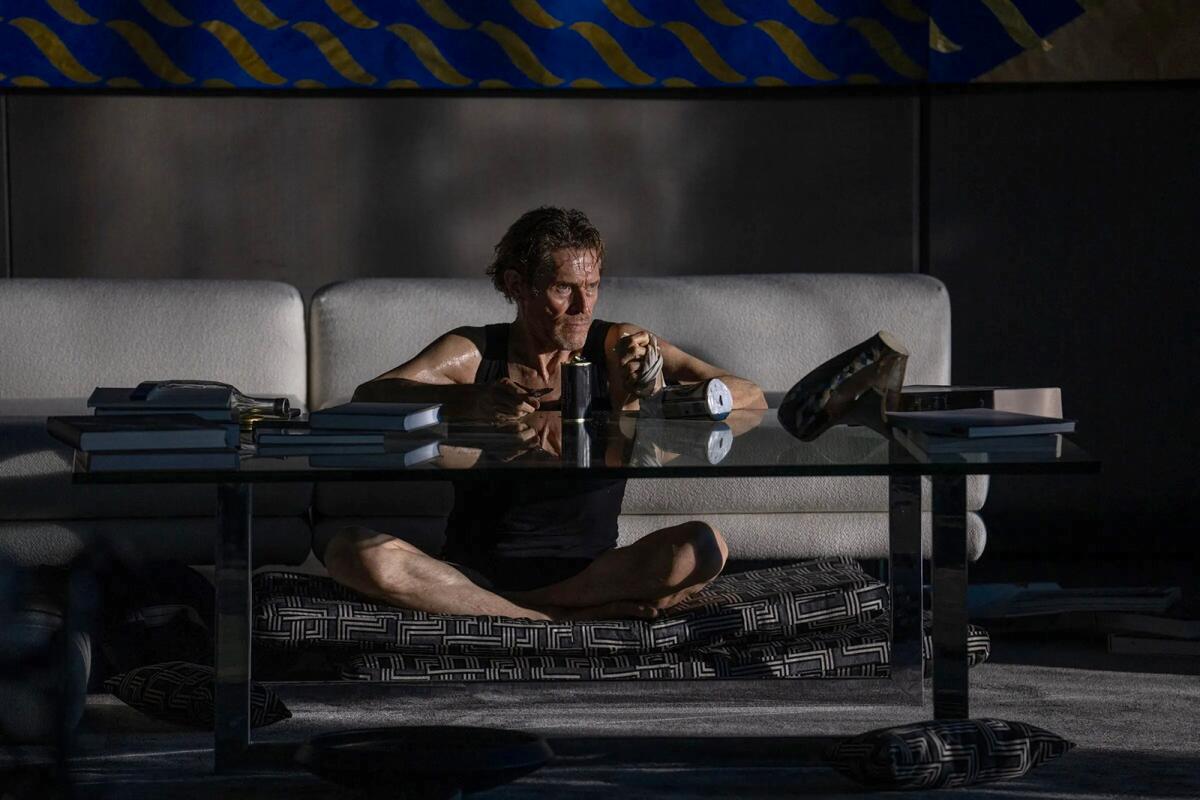Review: Trapped and alone, Willem Dafoe transcends art in psychological thriller ‘Inside’

- Share via
“Art is for keeps.” This turn of phrase, uttered by Willem Dafoe’s character Nemo in Vasilis Katsoupis’ narrative directorial debut, “Inside,” is a bedeviling little saying of multilayered meaning. It rattles around in your brain like a pinball, much in the way Nemo rattles around the luxury apartment where he’s trapped after an art heist gone wrong.
“Art is for keeps” — it speaks to the way we place value on art, and it’s also a cheeky taunt as Nemo helps himself to million-dollar works of modern art in the penthouse apartment of a wealthy collector. Later, it’s a statement that will haunt and even threaten Nemo, alone, in an increasingly dire survivalist situation, with only art to nourish him.
For your safety
The Times is committed to reviewing theatrical film releases during the COVID-19 pandemic. Because moviegoing carries risks during this time, we remind readers to follow health and safety guidelines as outlined by the CDC and local health officials.
“Inside,” written by Ben Hopkins (from a concept by Katsoupis), pits the most primal elements of humanity against the most advanced in order to tease out the contradictory and alienating nature of our current world. A coolly discerning camera takes in the apartment of this wealthy collector, away in Kazakhstan, as Nemo breaks in, overriding the security panel with codes fed to him by his partner on a walkie-talkie. Unable to locate a specific painting, he’s running out of time and attempts to escape, but the security system malfunctions and he’s trapped inside the apartment, a heavy, ornately carved wooden door sealing the vault.
There’s a certain suspension of disbelief required to believe that there’s truly no way out. But this highly automated smart home, which plays the “Macarena” when the fridge is open too long and features a full sprinkler system in case of fire, is so technologically advanced that there’s not even a phone, computer or access to the outside. It’s a luxurious prison, a gilded cage filled with priceless works of art whose value becomes null in this harrowing survivalist situation — after all, you can’t eat art.
But Katsoupis and Hopkins don’t undercut the value of artistic expression entirely. Nemo devolves in this nightmarish quarantine — first adapting, then struggling, literally battling the elements as the glitching home automation system blasts him with heat, then freezing cold. The water has been turned off, and he resorts to collecting it from the automated indoor sprinklers and licking moisture from the freezer. He dines on caviar before he starves, turning a hungry eye toward the exotic fish that swim unbothered in their tank high in the sky.
It’s “Survivor: Penthouse Apartment,” and it maps our 2020 experience of staying home during the pandemic (watch as Nemo pretends to host a cooking show) and explores some of the trauma that comes from this kind of isolation and alienation engendered by technology that is intended to make our lives more comfortable but, more often than not, keeps us apart.
Nemo has only works of art to keep him company, but his desire for connection and expression doesn’t die. He develops parasocial relationships with the building staff on the security monitors, unable to cry out to or connect with them. He eventually devolves into a sort of Early Man type, scrawling on the walls, creating strange altars and structures, developing an almost religious fervor in his isolation.
Katsoupis calls into question the overly inflated value of art while reminding us that expression is inherently human and elemental. It sits closer to the top on our hierarchy of needs than we might assume.
Katsoupis poses these probing and provocative questions about humanity but doesn’t offer any clear answers or messages. Rather, he lets his muse, Dafoe, simply inhabit this harrowing journey with his strange magnetism and sense of timelessness, in a performance that is simultaneously primitive and transcendent. Nemo becomes a figure straight out of Greek mythology, reckoning with the forces of creation and destruction, but it’s unclear whether he’s Sisyphus, Prometheus or perhaps even Icarus.
Walsh is a Tribune News Service film critic.
'Inside'
Rating: R, for language, some sexual content and nude images
Running time: 1 hour, 45 minutes
Playing: Starts March 17 in general release
More to Read
Only good movies
Get the Indie Focus newsletter, Mark Olsen's weekly guide to the world of cinema.
You may occasionally receive promotional content from the Los Angeles Times.










